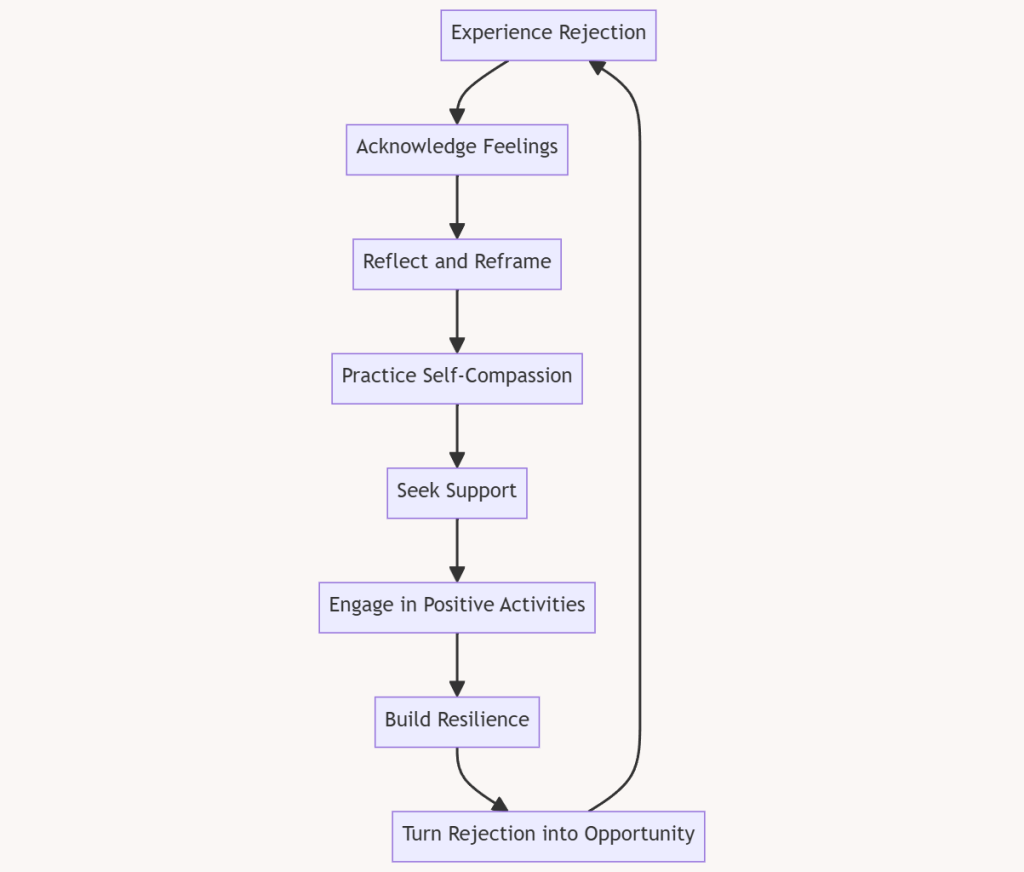
Rejection Hurts
Rejection is an inevitable part of life, affecting both personal and professional spheres. Whether it’s a job application, a romantic relationship, or a creative endeavor, the sting of rejection can be profound. In this guide, we will explore effective strategies to cope with rejection, build resilience, and turn setbacks into opportunities for growth.
Understanding the Impact of Rejection
Rejection triggers a range of emotional responses, from disappointment and frustration to self-doubt and sadness. Recognizing these emotions is the first step toward managing them effectively.
Emotional Responses to Rejection
When faced with rejection, it is common to experience:
- Sadness: A natural response to unmet expectations.
- Anger: Frustration directed at the source of rejection or oneself.
- Self-Doubt: Questioning one’s abilities or worth.
- Anxiety: Fear of future rejections or failures.
Understanding these emotions helps us address them constructively.
Strategies for Coping with Rejection
1. Acknowledge Your Feelings
Allow yourself to feel the pain of rejection without judgment. Bottling up emotions can lead to long-term psychological distress.
2. Reflect and Reframe
Take a step back and reflect on the rejection. Ask yourself:
- What can I learn from this experience?
- Are there any areas for improvement?
- How can this rejection guide me toward a better opportunity?
3. Practice Self-Compassion
Treat yourself with the same kindness and understanding you would offer a friend. Self-compassion involves:
- Mindfulness: Being aware of your feelings without over-identifying with them.
- Self-Kindness: Offering yourself comfort and care.
- Common Humanity: Recognizing that rejection is a universal experience.
4. Seek Support
Reach out to friends, family, or a therapist to talk about your feelings. Sharing your experience can provide relief and new perspectives.
5. Engage in Positive Activities
Distract yourself with activities that bring you joy and satisfaction. This can help reduce the intensity of negative emotions and boost your mood.
Building Resilience
Resilience is the ability to bounce back from setbacks. Developing resilience involves:
1. Cultivating a Growth Mindset
Embrace challenges as opportunities for growth rather than threats. A growth mindset encourages:
- Persistence: Continuing to strive despite obstacles.
- Adaptability: Adjusting strategies in response to setbacks.
- Optimism: Maintaining a positive outlook.
2. Setting Realistic Goals
Set achievable goals that provide a sense of purpose and direction. Break larger goals into smaller, manageable steps.
3. Developing Problem-Solving Skills
Enhance your ability to navigate challenges by practicing effective problem-solving techniques. This involves:
- Identifying the Problem: Clearly defining the issue.
- Generating Solutions: Brainstorming possible solutions.
- Evaluating Options: Assessing the pros and cons of each option.
- Taking Action: Implementing the chosen solution and evaluating its effectiveness.
Turning Rejection into Opportunity
1. Learning from Feedback
View rejection as an opportunity to receive valuable feedback. Use this information to improve and refine your approach.
2. Exploring New Paths
Rejection can open doors to new possibilities. Consider exploring alternative paths or opportunities that align with your strengths and interests.
3. Strengthening Relationships
Rejection can strengthen your support network. Lean on friends, family, and mentors who can provide encouragement and guidance.
4. Enhancing Personal Growth
Use rejection as a catalyst for personal development. Engage in self-improvement activities such as reading, taking courses, or practicing new skills.
Diagram: The Cycle of Rejection and Growth

Conclusion
Rejection, though painful, is a powerful teacher. By acknowledging our emotions, practicing self-compassion, and building resilience, we can transform rejection into a stepping stone toward greater success and fulfillment. Remember, every setback is an opportunity for growth. Embrace the journey and continue striving toward your goals with renewed strength and optimism.